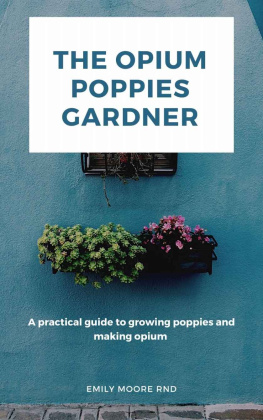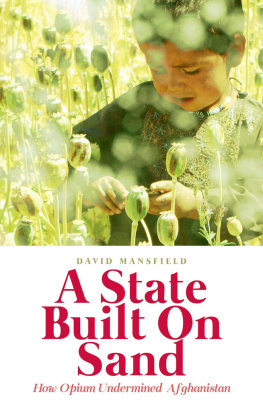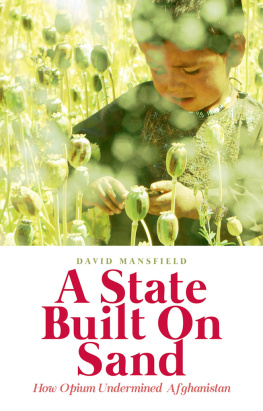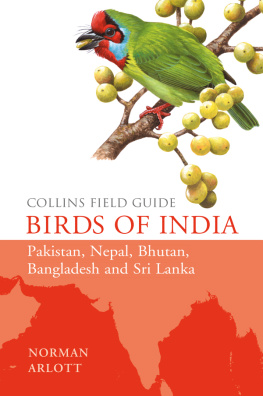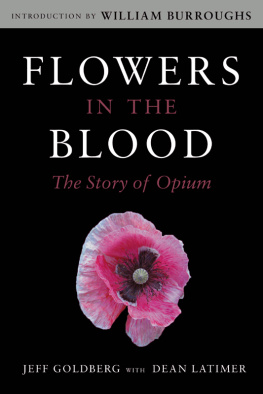
A HISTORY OF INTOXICATION
Within an imperialism-centred paradigm, A History of Intoxication: Opium in Assam, 1800-1959 is an attempt to unearth a critical relationship between a crucial lever of colonialism in Asia and a frontier province filled with tea gardens and on a route laden with opium poppy.
The present volume is premised on explaining several queries that revolve around the emerging pattern of consumption of opium in colonial Assam and the creation of drug-dependency in a social context. It analyses in a comprehensive manner the competing forces of the empire which played a key role in the production and distribution of opium; national politics alongside international drug diplomacy and how these together shaped the discourse of opium in Assam; the wider implications of opium production and consumption in the agrarian economy and the narrative of the nationalist critique of intoxication.
Kawal Deep Kour is an independent researcher on narcotics and drug policy. She has presented her work at various national and international forums. Dr. Kour is currently Member of Board at the International Society for the Study of Drug Policy, UK.
A History of
Intoxication
OPIUM IN ASSAM, 18001959
KAWAL DEEP KOUR
First published 2020
by Routledge
2 Park Square, Milton Park, Abingdon, Oxon OX14 4RN
and by Routledge
52 Vanderbilt Avenue, New York, NY 10017
Routledge is an imprint of the Taylor & Francis Group, an informa business
2020 Kawal Deep Kour and Manohar Publishers & Distributors
The right of Brett Kahr to be identified as author of this work has been asserted by him in accordance with sections 77 and 78 of the Copyright, Designs and Patents Act 1988.
All rights reserved. No part of this book may be reprinted or reproduced or utilised in any form or by any electronic, mechanical, or other means, now known or hereafter invented, including photocopying and recording, or in any information storage or retrieval system, without permission in writing from the publishers.
Trademark notice: Product or corporate names may be trademarks or registered trademarks, and are used only for identification and explanation without intent to infringe.
Print edition not for sale in South Asia (India, Sri Lanka, Nepal, Bangladesh, Pakistan or Bhutan)
British Library Cataloguing-in-Publication Data
A catalogue record for this book is available from the British Library
Library of Congress Cataloging-in-Publication Data
A catalog record for this book has been requested
ISBN: 978-0-367-41770-3 (hbk)
ISBN: 978-0-367-81677-3 (ebk)
Typeset in Bembo Std 11/13
by Manohar, New Delhi 110 002
To
My Mother Charanjit Kaur, and
Husband Capt. Surinder Singh,
The Driving Forces of My Life!
T HIS BOOK has been a journey of sorts. During this scholarly sojourn, I have benefited from a vast range of experiences which have added to my knowledge and at the same time, made me more persevering as a human being. I owe a considerable gratitude to all who made this journey an intellectually stimulating experience.
My deepest gratitude is to my supervisor, Arupjyoti Saikia. His meticulous comments, his enduring belief in my ability and his generous support have enormously contributed to the shaping of the present work. This intellectual debt to him I can never repay.
I am very grateful for the help I received from the various librarians and archivists at Assam State Archives, Department of Historical and Antiquarian Studies, Guwahati; libraries at Cotton College and the K.K. Handique Library at Gauhati University; the National Archives at New Delhi; the Central Secretariat Library, New Delhi; the Nehru Memorial Library at New Delhi; the National Medical Library of All India Institute of Medical Science, New Delhi who guided me through their treasure prove of documents and records on which this work has been based. Jayanta Nath has meticulously drafted the maps that appear in the volume. I am especially grateful to Baishya da and late Hira Sonowal of the Assam State Archives for all their help.
Apurba Jeevan Baruah, DIG, Assam Police ensured I had a safe and enriching field visit and stay at Tinsukia. The enthusiasm and support for my research that I received from my local host Akhil Barua of Makum and his NGO was a great incentive. I was humbled by the hospitality I received from the family of Ghanakanta Gogoi of Mamoroni village.
My colleagues and faculty members at the Department of Humanities and Social Sciences of the Indian Institute of Technology, Guwahati, have helped and motivated me in myriad ways.
My deepest appreciation goes to Sardar Pritpal Singh, ADG, Assam Police, for all his encouragement and support. Discussions with him were always illuminating.
My husband Capt. Surinder Singh, who has been a fierce critic and anchor, is the reason that this volume has been possible. I will remain indebted to my mother, Sardarni Charanjit Kaur. This book would not have materialized without her wishes and prayers and staunch support through all my years of turmoil. To my family, I owe special thanks for their affection and encouragement.
KAWAL DEEP KOUR
B Y ASSAM, I refer to the Brahmaputra valley. More specifically, the ryotwari areas of Kamrup, Darrang, Nowgong, Lakhimpur and Sibsagar are the areas covered in the present work. The former names of the places as Nowgong, Gowhatty, Gauhati, Calcutta have been retained in the book.
Terms such as tribe have been used to convey historically specific meanings. They have been used within quotation marks.
Abkaree: Excise revenue collected from drugs and liquor
Afing: Opium
Afu-toli: Poppy lands
Anna: Unit of currency. Equivalent to 1/16th of a rupee.
Aus: Early maturing variety of rice
Bari: Homestead
Behar opium: Opium grown in the Gangetic delta of Bihar and Bengal in the nineteenth century; procured by Government and circulated to different provinces as excise opium
Bepari: Term used to refer to Assamese merchants
Bigha: Measurement of land. 1/3rd of an acre
Burkandez: Mercenary soldiers who fought for the Mughal army
Char/Chapori: Sand banks near the river. Fertile and extensively cultivated during winters.
Charas: Pure resin which is a preparation from the hemp plant, also called hashish.
Chattak: Unit of weight. Equivalent to 58.32 grams
Dhapat: Tobacco
Ganja: Preparation made from the flowering tops of cultivated female parts of the hemp plant
Gossain: Spiritual preceptor
Haat: Village market
Hookah: Apparatus for smoking, a bamboo pipe
Kamrupa: Ancient name for Assam.


